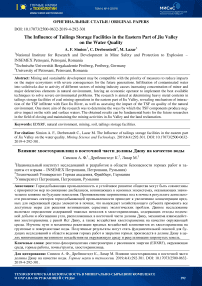The influence of tailings storage facilities in the eastern part of Jiu valley on the water quality
Автор: Simion A.F., Drebenstedt C., Lazar M.
Журнал: Горные науки и технологии @gornye-nauki-tekhnologii
Рубрика: Технологическая безопасность в минерально-сырьевом комплексе и охрана окружающей среды
Статья в выпуске: 4, 2019 года.
Бесплатный доступ
Mining and sustainable development may be compatible with the priority of measures to reduce impacts on the major ecosystems with severe consequences for the future generations. Infiltration of contaminated water into soils/rocks due to activity of different sectors of mining industry causes increasing concentration of minor and major deleterious elements in natural environment, forcing an economic operator to implement the best available techniques to solve severe environmental problems. The research is aimed at determining heavy metal contents in tailings storage facilities of coal mining operations in the eastern part of Jiu Valley, revealing mechanism of interaction of the TSF infiltrate with East Jiu River, as well as assessing the impact of the TSF on quality of the natural environment. One more aim of the research was to determine the ways by which the TSF components produce negative impact on the soils and surface waters. The obtained results can be fundamental basis for the future researches in the field of closing and maintaining the mining activities in Jiu Valley and the land reclamation.
Edxrf, natural environment, mining, soil, tailings storage facilities, рентгено-флюоресцентная спектрометрия с рассеянием энергии (edxrf)
Короткий адрес: https://sciup.org/140248964
IDR: 140248964 | DOI: 10.17073/2500-0632-2019-4-292-301
Текст научной статьи The influence of tailings storage facilities in the eastern part of Jiu valley on the water quality
In Jiu Valley, the human influence on soil cover determines two ways of soil types development: the first involves modification of the soil profile geomorphology due to disposal of tailings material from the coal extraction activity, and the second through intensive usage of the soils in agriculture [4, 5]. Mining activity in Jiu Valley is the main source of environmental pollution, both due to the extraction of coal and as a result of its washing. The main purpose of mining industry is to obtain useful mineral substances from underground resources and prepare them for their valorisation. Deterioration of environment components due to different activities performed within this industry leads to ecological imbalance that affects all living beings. Consequently, finding ways to prevent and reduce the impact of mining activities on the environment is a priority issue in this industry.
2. Presentation of tailings storage facilities and soil sampling networks
In the eastern part of the Jiu Valley there are 4 tailings storage facilities used by 3 mining units (Petrila, Lonea and Livezeni). The tailings storage facilities contain wastes of underground coal mining and following coal washing.
2.1. Livezeni tailings storage facility
Livezeni tailings storage facility was built for tailings disposal originating in the processes of coal mining and preparation at the Livezeni mine.
The taillings consist of both petrographically and granulometrically heterogeneous mixture of mostly barren rocks of productive and basal horizons of Petroşani carboniferous strata, comprising clay, gritty clay, marl, sandstone, coal shale and fragments of coal.
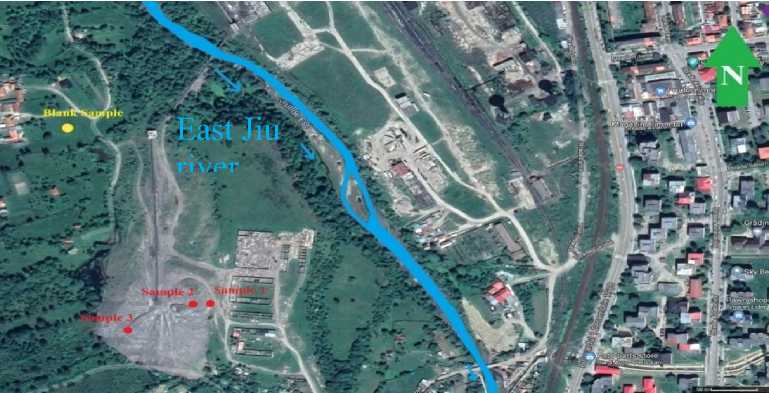
Fig. 1. Livezeni tailings storage facility
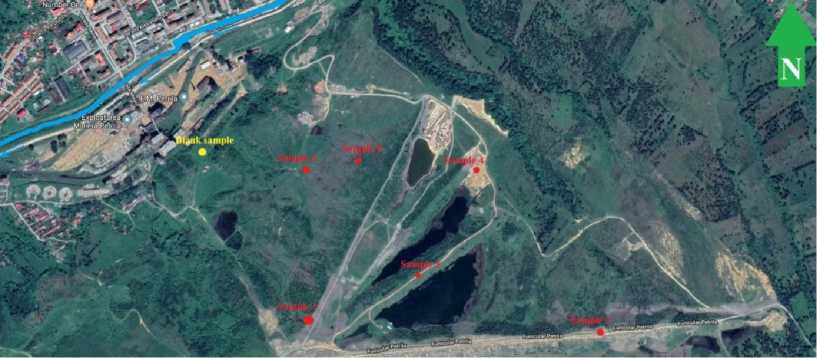
Fig. 2. Petrila tailings storage facility
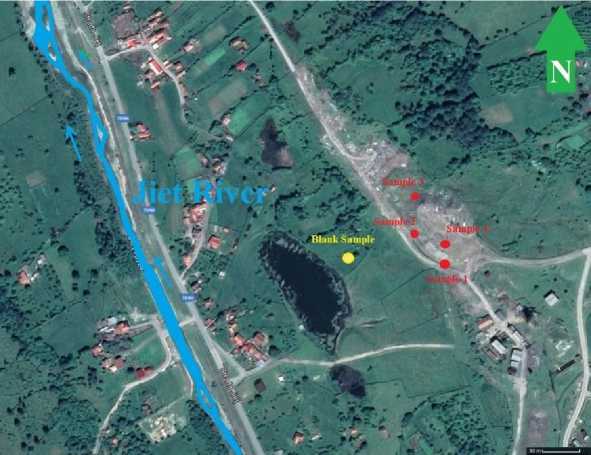
Fig. 3. Jiet tailings storage facility
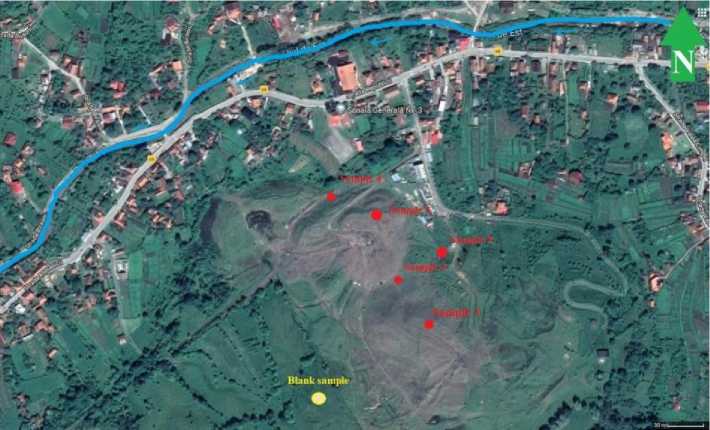
Fig. 4. Lonea 1 tailings storage facility
2.2. Petrila tailings storage facility
Petrila tailings storage facility was built for storage of waste rocks of Petrila mine and coal washing tailings of Petrila coal-washing plant. The Petrila tailings storage facility consists of 5 cells occupying the area of approximately 86 ha.
As for the hydrological regime, the presence of four lakes, the water level in which depends on season and precipitation rate, should be noted. In rainy periods the tailings heap is crossed by several streams with arising some water accumulations [5].
2.3. Jieț tailings storage facility
Jiet tailings storage facility is located in the vicinity of the former Jieţ-Defor coal strip mine and oriented SE-NW. In the north, the TSF heap borders with the decommissioned coal silos, which belonged to Lonea III. In the southwest, the TSF borders with the road connecting the former Jieţ-Defor coal strip mine and the mine coal storage site.
2.4. Lonea 1 tailings storage facility
From geological point of view, Lonea 1 TSF is located on the northern flank of the Petrosani synclinal basin. The base formation consists of Oligocene sediments represented by clayey rocks and greyish rocks. They are overlaid by recent deluvial and quaternary sediments represented by vegetal soils of 0.1 to 0.3m thick. The current TSF volume is estimated at approximately 229,100 m3.
In order to evaluate the TSFs negative impact on groundwater and surface water quality in the region, soil samples were collected from depths of 5 cm and 30 cm below the tailing heap surfaces, according to Order No. 184 of September 21, 1997, and, in addition, several samples at a depth of 60 cm were collected for more detailed survey of the profile under consideration.
3. Assaying for characterization of the tailings storage facilities materials
The soil samples taken from the tailings storage facilities belonging to the mining enterprises of the East Jiu Valley (the sampling points are marked on the maps of Figs. 1–4), were dried, crushed and pressed to produce pills, and then assayed by portable X-ray fluorescence spectrometer (EDXRF). Calibration of the instrument was performed in accordance with the standard “SR EN 15309:2007 Characterization of waste and soils – Determination of X-ray fluorescence elementary composition” using the certified reference material (NIST SRM 2711a Montana II soil) for soil matrix.
The research was aimed at determining content of heavy metals in the surveyed tailings, as well as assessing their influence on local hydrology and hydrogeology. For this, contents of Arsenic, Cadmium, Cobalt, Chromium, Copper, Nickel, Lead, Antimony, Thallium, Vanadium in the collected tailing soils were measured (Tabs. 2–5), and the obtained results were compared with the alert and impact thresholds according to the land use categories (Table 1), by "ORDER No. 756 of November 3, 1997 for the approval of the Regulation on Environmental Pollution Assessment".
The choice of heavy metals for the assaying has been made taking into account the economic activities carried out in the area and the toxicity to the aquatic ecosystems.
The contents of arsenic, copper and lead in the tailings of Livezeni mine is slightly above the baseline value (see Tabs. 1, 2), with no significant potential pollution being recorded. The chromium and nickel contents exceeded the alert threshold for the sensitive use category, evidencing potentially significant pollution in the area. Therefore, additional monitoring shall be performed for obtaining additional details, based on which soil improvement techniques shall be applied to reduce the concentrations of pollutants and to mitigate potential impact on the environment. The concentrations of antimony, vanadium, thallium, and cadmium exceed the impact threshold for sensitive and less sensitive uses, requiring implementing measures for reducing the soil pollutant concentrations and performing risk assessment studies.
Table 1
Limits of heavy metal contents in soils [7]
|
Assayed component |
Baseline values |
Alert threshold Type of use |
Impact threshold Type of use |
Reference condition |
||
|
Sensitive |
Less Sensitive |
Sensitive |
Less Sensitive |
|||
|
Arsenic |
5 |
15 |
25 |
25 |
50 |
Order No. 756/1997 (mg/kg, on a dry substance basis) |
|
Cadmium |
1 |
3 |
5 |
5 |
10 |
|
|
Cobalt |
15 |
30 |
100 |
50 |
250 |
|
|
Chromium |
30 |
100 |
300 |
300 |
600 |
|
|
Copper |
20 |
100 |
250 |
200 |
500 |
|
|
Nickel |
20 |
75 |
200 |
150 |
500 |
|
|
Lead |
20 |
50 |
250 |
100 |
1000 |
|
|
Antimony |
5 |
12,5 |
20 |
20 |
40 |
|
|
Thallium |
0.1 |
0.5 |
2 |
2 |
5 |
|
|
Vanadium |
50 |
100 |
200 |
200 |
400 |
|
Table 2
Livezeni tailings storage facility material assays (mg/kg, on a dry substance basis)
|
Sample point |
Depth |
Element |
|||||||||
|
Arsenic |
Cadmium |
Cobalt |
Chromium |
Copper |
Nickel |
Lead |
Antimony |
Thallium |
Vanadium |
||
|
r^ mi чо m ХГ ОО Он 04 40 § % % 00 хС ml 5 и |
5 cm |
8 |
14 |
UDL * |
137 |
36 |
90 |
22 |
19 |
47 |
211 |
|
30 cm |
7 |
9 |
60 |
171 |
49 |
154 |
33 |
26 |
44 |
345 |
|
|
60 cm |
13 |
19 |
59 |
133 |
50 |
99 |
29 |
25 |
27 |
258 |
|
|
U 9 Он 04 40 § % % 00 хС ml 5 и |
5 cm |
3 |
8 |
41 |
126 |
47 |
113 |
33 |
15 |
35 |
342 |
|
30 cm |
10 |
4 |
31 |
148 |
40 |
109 |
27 |
30 |
33 |
278 |
|
|
60 cm |
13 |
7 |
50 |
154 |
66 |
118 |
36 |
21 |
40 |
301 |
|
|
ОО о Он 04 40 С5 1П <П 00 Xf ml £ M |
5 cm |
12 |
18 |
9 |
132 |
62 |
127 |
27 |
37 |
46 |
336 |
|
30 cm |
25 |
20 |
42 |
131 |
61 |
138 |
34 |
35 |
55 |
281 |
|
|
60 cm |
9 |
26 |
37 |
148 |
27 |
102 |
20 |
37 |
24 |
190 |
|
|
^ Щ m 40 & X m g ° 40 m о.) |
5 cm |
2 |
UDL * |
12 |
39 |
18 |
41 |
12 |
9 |
11 |
58 |
|
30 cm |
3 |
UDL * |
18 |
49 |
11 |
21 |
6 |
15 |
9 |
72 |
|
* UDL - under detection limit
Table 3
Jiet tailings storage facility material assays (mg/kg, on a dry substance basis)
|
Sample point |
Depth |
Element |
|||||||||
|
Arsenic |
Cadmium |
Cobalt |
Chromium |
Copper |
Nickel |
Lead |
Antimony |
Thallium |
Vanadium |
||
|
04 40 04 m о о in Pm ri CO XT O1 ^ M |
5 cm |
14 |
18 |
87 |
112 |
54 |
75 |
29 |
29 |
38 |
368 |
|
30 cm |
3 |
16 |
127 |
107 |
50 |
83 |
28 |
33 |
15 |
323 |
|
|
60 cm |
UDL * |
3 |
42 |
125 |
27 |
77 |
25 |
18 |
26 |
168 |
|
|
M m X S d) °P oo S X xr co m XT (^1 |
5 cm |
9 |
10 |
88 |
133 |
74 |
109 |
33 |
19 |
39 |
208 |
|
30 cm |
6 |
4 |
58 |
99 |
27 |
70 |
24 |
6 |
21 |
296 |
|
|
60 cm |
7 |
4 |
66 |
131 |
39 |
89 |
26 |
12 |
43 |
208 |
|
|
40 cxl m ^9 9
C5 ГП ^ M |
5 cm |
3 |
5 |
44 |
242 |
70 |
108 |
24 |
15 |
62 |
278 |
|
30 cm |
9 |
4 |
82 |
147 |
53 |
106 |
25 |
18 |
41 |
141 |
|
|
60 cm |
12 |
UDL * |
59 |
255 |
61 |
148 |
28 |
19 |
31 |
268 |
|
|
^ OO C\f О О in Pm ri § 5 m co xr m ^ M |
5 cm |
13 |
7 |
71 |
187 |
66 |
123 |
36 |
16 |
39 |
398 |
|
30 cm |
11 |
12 |
60 |
167 |
47 |
124 |
27 |
15 |
58 |
161 |
|
|
60 cm |
UDL * |
3 |
42 |
125 |
27 |
77 |
25 |
18 |
26 |
168 |
|
|
о -и cn m i S s ^ m |
5 cm |
17 |
1 |
106 |
162 |
25 |
82 |
45 |
28 |
34 |
206 |
|
30 cm |
12 |
UDL * |
48 |
142 |
38 |
330 |
51 |
29 |
47 |
101 |
|
* UDL - under detection limit
Lonea 1 tailings storage facility material assays (mg/kg, on a dry substance basis)
|
Sample point |
Depth |
Element |
|||||||||
|
Arsenic |
Cadmium |
Cobalt |
Chromium |
Copper |
Nickel |
Lead |
Antimony |
Thallium |
Vanadium |
||
|
СП 40 оо ОО сП о о хГ ^9 9 Я 1П гП 00 ХГ И] Z и |
5 cm |
10 |
11 |
44 |
162 |
69 |
85 |
38 |
13 |
47 |
208 |
|
30 cm |
10 |
19 |
35 |
206 |
28 |
117 |
24 |
20 |
22 |
87 |
|
|
60 cm |
16 |
11 |
31 |
135 |
64 |
91 |
64 |
16 |
46 |
213 |
|
|
40 40 40 О 2 $ s ^^9 л *п со 00 хГ щ Z и |
5 cm |
11 |
4 |
UDL * |
129 |
40 |
71 |
21 |
23 |
46 |
263 |
|
30 cm |
16 |
7 |
39 |
153 |
75 |
130 |
56 |
28 |
35 |
195 |
|
|
60 cm |
14 |
3 |
55 |
148 |
84 |
95 |
26 |
31 |
38 |
224 |
|
|
О in XT ^35 (Х5 1П сП (Z) ХГ О1 Z и |
5 cm |
10 |
9 |
0 |
124 |
41 |
81 |
20 |
33 |
27 |
120 |
|
30 cm |
16 |
7 |
97 |
160 |
36 |
95 |
35 |
18 |
53 |
314 |
|
|
60 cm |
11 |
7 |
33 |
139 |
35 |
93 |
27 |
14 |
29 |
223 |
|
|
О Щ Xt-^ ОО О 40 хг ^^9 (Х5 1П сП (Z) ХГ О1 Z Щ |
5 cm |
5 |
12 |
67 |
162 |
74 |
110 |
42 |
18 |
32 |
355 |
|
30 cm |
9 |
1 |
42 |
183 |
78 |
119 |
34 |
21 |
75 |
265 |
|
|
60 cm |
5 |
UDL * |
33 |
82 |
41 |
83 |
18 |
22 |
26 |
340 |
|
|
15 5 00 хГ Я Z и |
5 cm |
6 |
UDL * |
UDL * |
122 |
38 |
63 |
23 |
17 |
27 |
ND |
|
30 cm |
8 |
14 |
81 |
110 |
66 |
111 |
34 |
25 |
35 |
343 |
|
|
60 cm |
7 |
16 |
170 |
150 |
65 |
147 |
57 |
25 |
54 |
154 |
|
|
и § (Х5 1П сП (Z) ХГ О1 Z Щ |
5 cm |
13 |
3 |
53 |
139 |
45 |
125 |
51 |
20 |
27 |
148 |
|
30 cm |
9 |
4 |
39 |
170 |
UDL * |
85 |
23 |
24 |
42 |
113 |
|
|
60 cm |
17 |
29 |
38 |
251 |
37 |
159 |
24 |
22 |
34 |
144 |
|
|
^ ОО 15 я s м |
5 cm |
12 |
21 |
81 |
154 |
199 |
133 |
38 |
51 |
61 |
190 |
|
30 cm |
10 |
11 |
44 |
162 |
69 |
85 |
38 |
13 |
47 |
208 |
|
* UDL - under detection limit
Table 5
Petrila tailings storage facility material assays (mg/kg, on a dry substance basis)
|
Sample point |
Depth |
Element |
|||||||||
|
Arsenic |
Cadmium |
Cobalt |
Chromium |
Copper |
Nickel |
Lead |
Antimony |
Thallium |
Vanadium |
||
|
^ г! ^ со об § 5 % 00 хГ о1 Z и |
5 cm |
15 |
ND |
35 |
135 |
49 |
128 |
28 |
45 |
39 |
127 |
|
30 cm |
15 |
9 |
74 |
130 |
47 |
128 |
25 |
32 |
51 |
221 |
|
|
60 cm |
13 |
2 |
58 |
134 |
53 |
151 |
30 |
42 |
47 |
222 |
|
|
^ 4Q 40 оо и а НнС^ 5 £ Т ^ С5 1/4 сП СО Xt Г1 Z и |
5 cm |
14 |
UDL * |
0 |
111 |
33 |
89 |
27 |
30 |
30 |
174 |
|
30 cm |
8 |
UDL * |
72 |
139 |
53 |
106 |
24 |
23 |
39 |
173 |
|
|
60 cm |
11 |
9 |
61 |
143 |
48 |
104 |
32 |
41 |
40 |
164 |
|
|
rq ХГ rq ХГ m оо Нч со об СО xt /1 Z и |
5 cm |
8 |
UDL * |
UDL * |
111 |
53 |
84 |
31 |
28 |
36 |
207 |
|
30 cm |
24 |
9 |
37 |
161 |
65 |
140 |
51 |
30 |
44 |
219 |
|
|
60 cm |
16 |
15 |
123 |
158 |
67 |
162 |
43 |
UDL * |
59 |
145 |
|
|
И я ^ ОО со JU 40 о Он <ГТ О\ га tr> m 00 хГ О1 Z Щ |
5 cm |
2 |
UDL * |
49 |
162 |
35 |
98 |
24 |
17 |
33 |
178 |
|
30 cm |
7 |
14 |
81 |
143 |
28 |
109 |
35 |
27 |
42 |
246 |
|
|
60 cm |
10 |
9 |
97 |
129 |
33 |
104 |
28 |
31 |
51 |
260 |
|
|
40 ОО Г- 40 U Р й X- ri об О) хН О1 Z и |
5 cm |
13 |
24 |
80 |
123 |
57 |
99 |
33 |
28 |
37 |
92 |
|
30 cm |
26 |
UDL * |
155 |
114 |
68 |
125 |
41 |
14 |
51 |
250 |
|
|
60 cm |
7 |
4 |
103 |
148 |
51 |
134 |
31 |
34 |
47 |
96 |
|
|
3 04 40 СЮ 40 JU 40 OI гб об га ю со 00 хН о ! Z и |
5 cm |
15 |
UDL * |
UDL * |
119 |
68 |
93 |
38 |
26 |
22 |
233 |
|
30 cm |
12 |
UDL * |
80 |
104 |
36 |
72 |
22 |
35 |
46 |
83 |
|
|
60 cm |
9 |
UDL * |
0 |
56 |
27 |
65 |
17 |
55 |
19 |
67 |
|
|
^ 40 О 40 ОО Нн | я S м |
5 cm |
5 |
1 |
29 |
68 |
19 |
55 |
18 |
22 |
11 |
74 |
|
30 cm |
7 |
3 |
27 |
76 |
21 |
74 |
11 |
29 |
9 |
68 |
|
* UDL - under detection limit
Table 4
In the Jiet TSF, the contents of arsenic, copper, and lead are slightly higher than the baseline levels (see Tables 1, 3), with no significant potential pollution of the area. The chromium and nickel contents exceed the alert threshold for the sensitive use category, evidencing potentially significant pollution in the area. Therefore, additional monitoring shall be performed for obtaining additional details, based on which soil im-
provement techniques shall be applied to reduce the concentrations of pollutants and mitigate potential impact on the environment. Concentrations of antimony, vanadium, thallium, and cadmium exceed the impact threshold for sensitive and less sensitive uses, requiring implementing measures for reducing the soil pollutant concentrations and performing risk assessment studies.
In the Lonea 1 TSF, the contents of arsenic, copper, and lead are higher than the baseline levels (see Tables 1, 4), with potentially significant soil pollution occurring only in some horizons. The chromium and nickel contents exceed the alert threshold for the sensitive use category, evidencing potentially significant pollution in the area. Therefore, additional monitoring shall be performed for obtaining additional details, based on which soil improvement techniques shall be applied to reduce the concentrations of pollutants and mitigate potential impact on the environment. Concentrations of antimony, vanadium, thallium, and cadmium exceed the impact threshold for sensitive and less sensitive uses, requiring implementing measures for reducing the soil pollutant concentrations and performing risk assessment studies.
In the Petrila mine TSF, the contents of copper and lead are slightly higher than the baseline levels (see Tables 1, 5), with no significant potential pollution of the area. In most cases, the arsenic, chromium and nickel contents exceed the alert threshold for the sensitive use category, evidencing potentially significant pollution in the area. Therefore, additional monitoring shall be performed for obtaining additional details, based on which soil improvement techniques shall be applied to reduce the concentrations of pollutants and mitigate potential impact on the environment. Concentrations of antimony, vanadium, thallium, and cadmium exceed the impact threshold for sensitive and less sensitive uses, requiring implementing measures for reducing the soil pollutant concentrations and performing risk assessment studies.
4. Discussion
The pollution of the surveyed soils with heavy metals was mainly due to the coal mining and washing enterprises activity. Additional marked pollution sources were wood processing, coal burning, road traffic, natural fires, the use of fertilizers, and household activities. Soil enrichment in cadmium was mainly caused by anthropogenic pollution, namely underground coal mining, the use of fertilizers in local micro-farming, the upward movement of metals in the soils due to repeated precipitation and association with organic matter occurring in organic horizons (the upper part of the soils) [3, 8]. The use of high-zinc or phosphorus fertilizers, in addition to soil enrichment with these components, also mobilizes other heavy metals: Ni, Cu, Cd, V, Cr, etc. In the vicinity of the TSFs in the eastern part of Jiu Valley, uncontrolled household waste storages are located, which may produce negative impact on surface water chemistry. Such storages may generate heat to promote mobilizing cadmium into the hydrological system, accompanied by entraining Cd-containing particles in the predominant wind direction [1, 7]. The anthropogenic chromium sources are mainly represented by coal burning in households and thermal power plants. Lead is sourced from extraction and processing of ores and also from the combustion of petrol Pb additives (lead tetramethyl, Pb(CH3)4 and lead tetraethyl, Pb(CH3CH2)4) [2, 6]. The TSFs in the eastern part of Jiu Valley are generally characterized by reduced cover crop, uneven slope angles that encourages infiltration and leakage, and the effect is amplified by abundant precipitations and decreased water interception due to the lack of vegetation cover. Thus, important water flows enter into the tailings storage facilities, where, depending on oxygen content in the air, pH, complexing agents, Eh in the TSF, acid rock drainage and metal leaching (ARDML) conditions arise, which promote leaching of metals and following precipitation of their salts resulting in pollution of soils and surface and ground waters (Fig. 5).
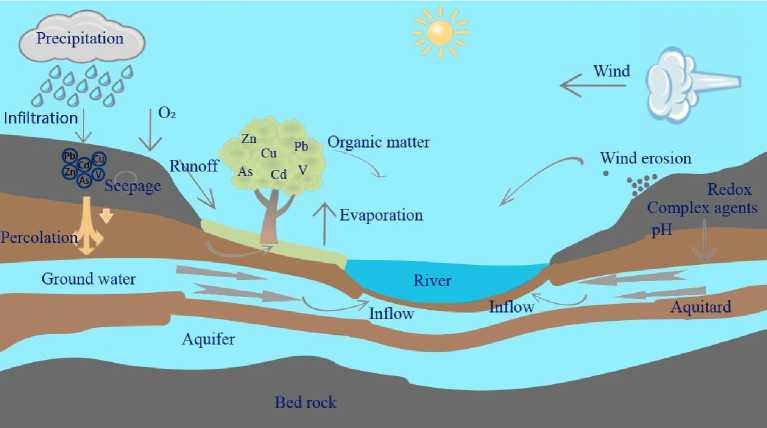
Fig. 5. Influence of TSFs on river basin
Table 6
Groundwater pollution mainly affects aquatic ecosystems present in the eastern part of Jiu Valley, which can very easily accumulate heavy metals from the environment, because of the time exposure for most species of 100% due to the inability to change the living environment. From toxicological point of view, the pollution with minor elements takes effect only at the regional or river basin level, but the complexity of the effects on
aquatic ecosystems, taking into account the local population needs, produces major impact on health of the population. In this connection we took a decision to collect and assay water samples from East Jiu River (Table 6). Based on the assaying results, the river water proved to be of category 1 quality in terms of metal concentrations and categories 2 and 3 quality in terms of nitrite, nitrate, phenol, and phosphorus concentrations.
The East Jiu river water assay data
|
Sample point Indicator |
East Jiu river downstream the confluence with Răscoala |
East Jiu river upstream Taia |
East Jiu river downstream the confluence with Jiet |
East Jiu river upstream the confluence with Banița |
East Jiu river downstream the confluence with Bănița |
East Jiu river near Livezeni |
|
Temperature, °C |
7.5 |
8.1 |
8.4 |
7.9 |
7.7 |
10.2 |
|
pH |
6.82 |
6.7 |
6.59 |
6.87 |
6.67 |
7.15 |
|
Conductivity, µS/m2 |
84.3 |
145,6 |
129.3 |
141.8 |
107.1 |
138.7 |
|
TDS*, mg/l |
59.4 |
83.9 |
68.4 |
87.3 |
104.2 |
92.7 |
|
Turbidity, NTU |
35 |
46 |
45 |
47 |
42 |
45 |
|
Sodium, mg/l |
4,97 |
15.1 |
8.9 |
7.3 |
7.9 |
11.8 |
|
Dissolved O2, mg O2/l |
12.75 |
11.91 |
10.47 |
12,94 |
14.9 |
11.34 |
|
BOD 5 , mg/l |
4,97 |
6.34 |
5.49 |
6.18 |
5.67 |
4.91 |
|
Total phosphorus, mg/l |
0.11 |
0.14 |
0.17 |
0.15 |
0.16 |
0.21 |
|
Nitrite NO -2 , mg/l |
0.04 |
0.11 |
0.06 |
0.21 |
0.09 |
0.34 |
|
Nitrate NO -3 , mg/l |
1.23 |
3.14 |
2.84 |
3,11 |
3.17 |
3.58 |
|
Sulfate, mg/l |
72.7 |
68.9 |
97.3 |
104.7 |
98.4 |
127.5 |
|
Phenol, µg/l |
1.63 |
0.8 |
1.92 |
4.9 |
3.4 |
4.3 |
|
Arsenic, µg/l |
5 |
14 |
13 |
15 |
11 |
12 |
|
Chromium, µg/l |
UDL * |
3 |
3 |
2 |
2 |
3 |
|
Cooper, µg/l |
3 |
5 |
4 |
7 |
3 |
4 |
|
Lead, µg/l |
UDL * |
UDL * |
1 |
2 |
2 |
UDL * |
|
Mercury, µg/l |
UDL * |
UDL * |
UDL * |
UDL * |
UDL * |
UDL * |
|
Cadmium, µg/l |
UDL * |
UDL * |
1 |
1 |
UDL * |
UDL * |
* UDL - under detection limit
Table 6 shows no major impact of the TSFs on East Jiu River. The problem is that the mobility and mechanism of fixation (and forms of occurrence) of metals in the soils is not yet known, and it is not possible to objectively correlate the metal concentrations in the TSFs in East Jiu Valley with the concentrations of metals in the Jiu River water.
5. Conclusions
As a result of the research on the heavy metal contents in the TSFs in East Jiu Valley, the concentration of the minor elements in the lower horizons of the soils was determined. Notice that the number of metals detected in the assayed soils exceeded that of the metals presented in the paper, but we decided to show the data only for the metals regulated in the Romanian legislation by Order No. 756 of November 3, 1997 (the regulation on environmental pollution assessment).
In the surveyed TSFs located in the eastern part of Jiu Valley contents of arsenic, copper, and lead in the soils exceed the baseline values
from the Order 756/1997, and potentially significant soil pollution was revealed in some layers. The alert threshold for the sensitive use category has been exceeded for chromium and nickel that means significant potential pollution in the surveyed region. The concentrations of antimony, vanadium, thallium and cadmium exceed the impact thresholds for sensitive and less sensitive uses. This requires implementing measures for reducing the soil pollutant concentrations, modernization of the TSFs, and recycling of the TSFs materials. The research findings can serve as useful database for both future correlations and development of complex programs for monitoring and surveying the behavior of heavy metals in soils. Heavy metals contained in the TSFs located in the eastern part of Jiu Valley do not heavily impact on Jiu River water, because the waters with such metal concentrations (measured) belong to quality category 1. However, due to designed long life of the TSFs, they may have greater impact on the river’s water in the long term.
SpringerVerlag, Berlin.
Список литературы The influence of tailings storage facilities in the eastern part of Jiu valley on the water quality
- Adriano D. C., 2001, Trace elements in Terrestrial Environments. Biogeochemisty, Bioavailability and Risk of Metals, second edition, Springer.
- Costache C., Modrogan C., Ecotoxicology and risk assessment, Agir Publishing House, Romania, 2006.
- Iancu O. G., Buzgar N., The geochemical atlas of heavy metals in the soils of the city also takes its surroundings, Alexandru Ioan Cuza University Publishing House, Romania, 2008.
- Lazar M., Dumitrescu I., Anthropic impact on the environment, Universitas Publishing House, Romania, 2006.
- Lazar M., The rehabilitation of the degraded lands, Universitas Publishing House, Romania, 2010.
- Murariu A., Stratu A., Costică N., Costică M., Secu C, Răşcanu D., 2007, Researches concerning the impact pollution with heavy metals of soil and vegetation on the area of domestic waste deposit at Tomeşti-Iaşi, An. Şt. Ale Univ. "Al. I. Cuza" Iaşi, T LIII, s II a, Biologie vegetală.
- ORDIN nr. 756 din 3 noiembrie 1997 pentru aprobarea Reglementării privind evaluarea poluării mediului.
- Siegel, F. R., 2002, Environmental Geochemistry of Potentially Toxic Elements, p. 218. Springer Verlag, Berlin.
- SR EN 15309:2007 Characterization of waste and soils - Determination of the X-ray fluorescence elementary composition.

